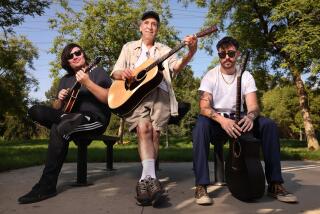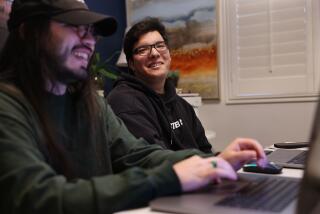Special Kids Reach Out to the Elderly
- Share via
At first, Patrick Seegar was scared of the nursing home.
“I didn’t know what it was going to be like,” said Patrick, 12, of Santa Clarita, a student at the Village Glen School of the HELP Group in Sherman Oaks.
The students “were terrified of the older people,” said Patrick’s teacher, Elizabeth Onyango.
But then, Patrick met Katherine, a resident of Laurelwood Health Care Center in North Hollywood, who had just celebrated her 72nd birthday. “She’s a very nice lady,” Patrick said.
The children sang songs for residents and became engrossed in the stories of war veterans, Onyango said.
By the end of the visit in January, the class had decided to return.
The class would visit the second Thursday of every month as part of the Festival of Youth, a Milken Foundation-sponsored program to help get schools into volunteering.
Onyango began to notice how the shy students would loosen up and relax as they got to know the elderly residents.
For the HELP group, geared to teach students who have a wide variety of limitations, it also meant being shown that they could make a difference in the world, said Thomas Komp, director of admissions for the school.
The Village Glen program--which Patrick attends--has small classes of 12 students or fewer to give special attention to those who have learning disabilities or trouble with communication and socialization.
Patrick was born with spina bifida and is dyslexic. “The doctors told me he may have brain damage and that he probably would not be able to walk,” said Patrick’s mother, Darcy Seegar.
But Patrick was lucky. While spina bifida--in which the spinal column is improperly formed--can cause brain damage, that did not happen in his case. The surgery that he had at 14 months was successful. Only a tiny proportion of children who undergo such surgery can walk afterward.
“If I had not known any of his life story, I would have never guessed,” said Carl Goodman, principal of the HELP Group schools, which have 380 students on a five-acre campus.
Patrick could walk, and his parents quickly found out that he had a creative mind that was drawn to mechanical things. They tell stories of Patrick as a toddler figuring out how to unlatch a childproof window screen.
But at the school he attended before the HELP Group--which he and his mother declined to name--he was slower than the other children, both on the playground and in the classroom, Patrick said. Other students would read seven pages before he could finish the first one.
“They would tease me,” said Patrick, who started at the HELP Group in September. “Sometimes I couldn’t take it and sometimes I could.”
When it bothered him, he would hide quietly in a small corner just off the schoolyard. “No one would go there.”
Katherine, the nursing home resident, also seemed to be in a quiet refuge.
“She doesn’t talk much,” Patrick said. “You’d think she’s asleep at first, but when you ask her questions, she talks to you.”
But making connections with the nursing-home residents was not easy for the children.
One autistic child refused to make the first three trips, Onyango said. But fear rises out of a lack of understanding, something Patrick learned about on the playground.
“It’s not what is on the outside,” Patrick said. “It is what is on the inside that counts.”
Volunteering helps the students feel good about themselves, but that is only part of it. “The other part is being able to see what kind of value your education has,” Goodman said.
“It opened a whole new perspective on my life,” Patrick said. “Here I learned I could help the world.”
More to Read
Sign up for Essential California
The most important California stories and recommendations in your inbox every morning.
You may occasionally receive promotional content from the Los Angeles Times.










